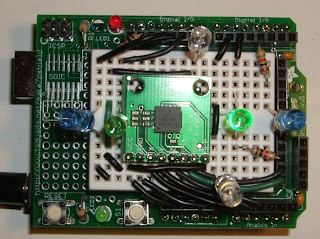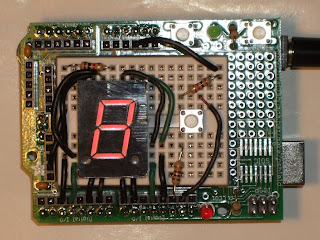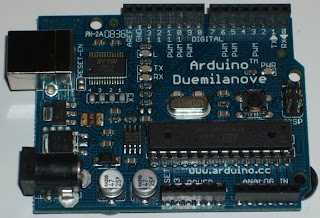Dark sensor

This is really a test of a light sensor, or Light Dependent Resistor (LDR). I got one of these with my prototyping kit from Adafruit and figured I should learn how to use it. There is actually a much more useful article on Libelium that shows how to hook it up more clearly and even gives schematics. The 5v is dropped a bit with a 1k resistor. The LDR is dropped into ground with the other end sitting between the dropped 5v and one of the analog ports. As voltage varies through the LDR the analog port sees the difference and reports it. In my code whatever is found on the LDR/analog port (0-1023) is translated into a number of LEDs to light. The lower the value - or less resistance to ground - presented by the LDR shows up as a lower value on the analog port. This means less LEDs lit. The higher the values and the more LEDs are lit. I built several versions of this setup, but the one pictured is the last version. It uses 9 LEDs I took from a Christmas light string I got from Gerten...


